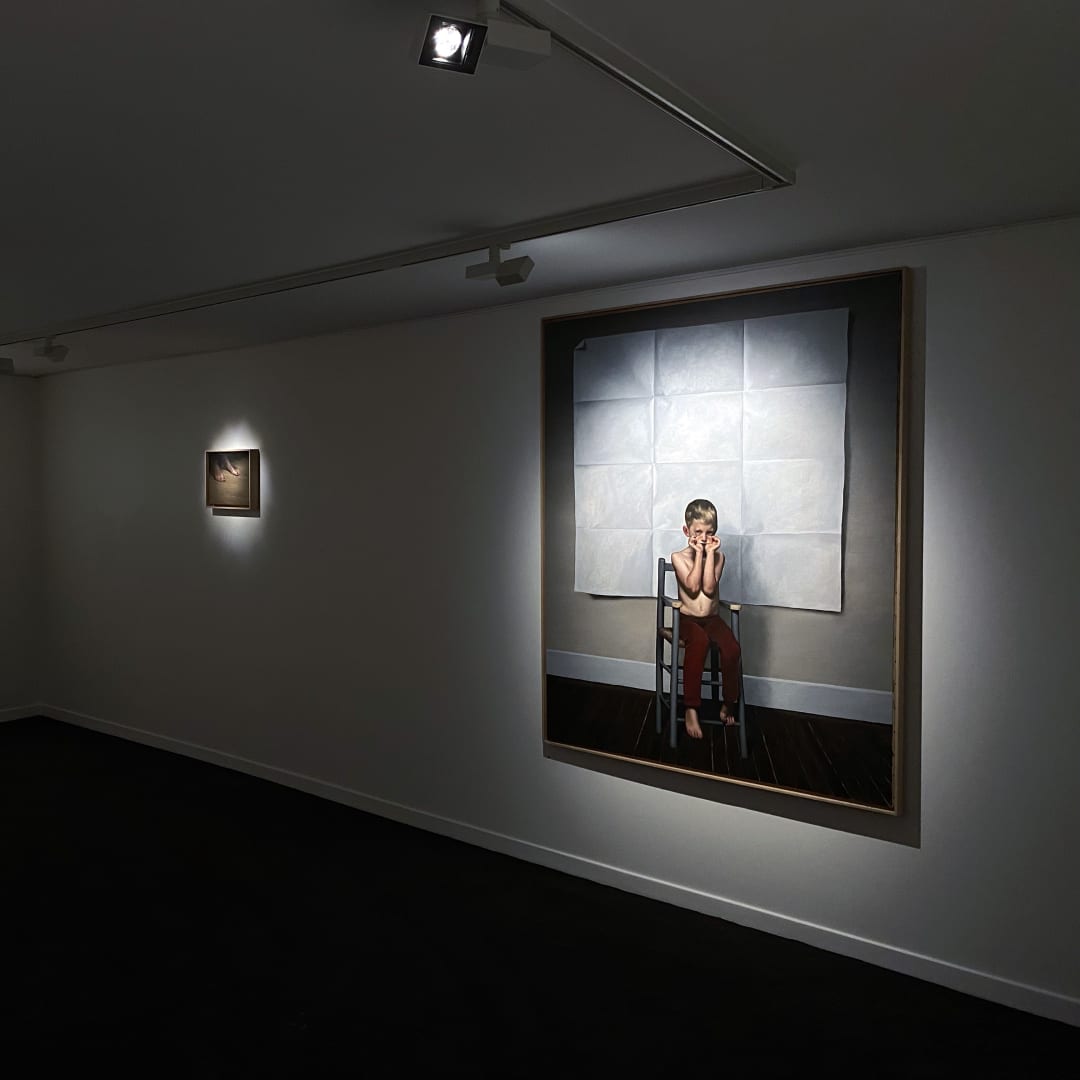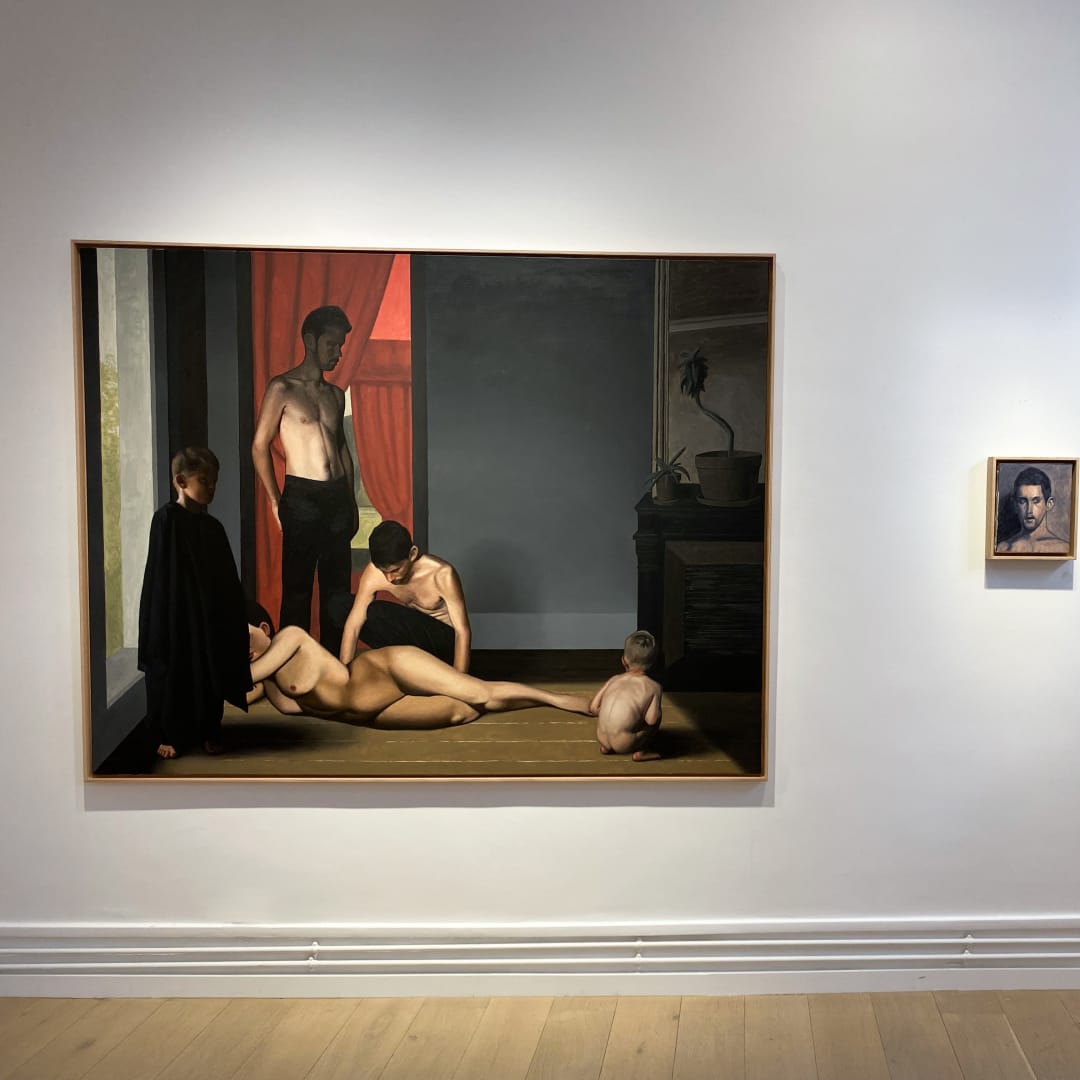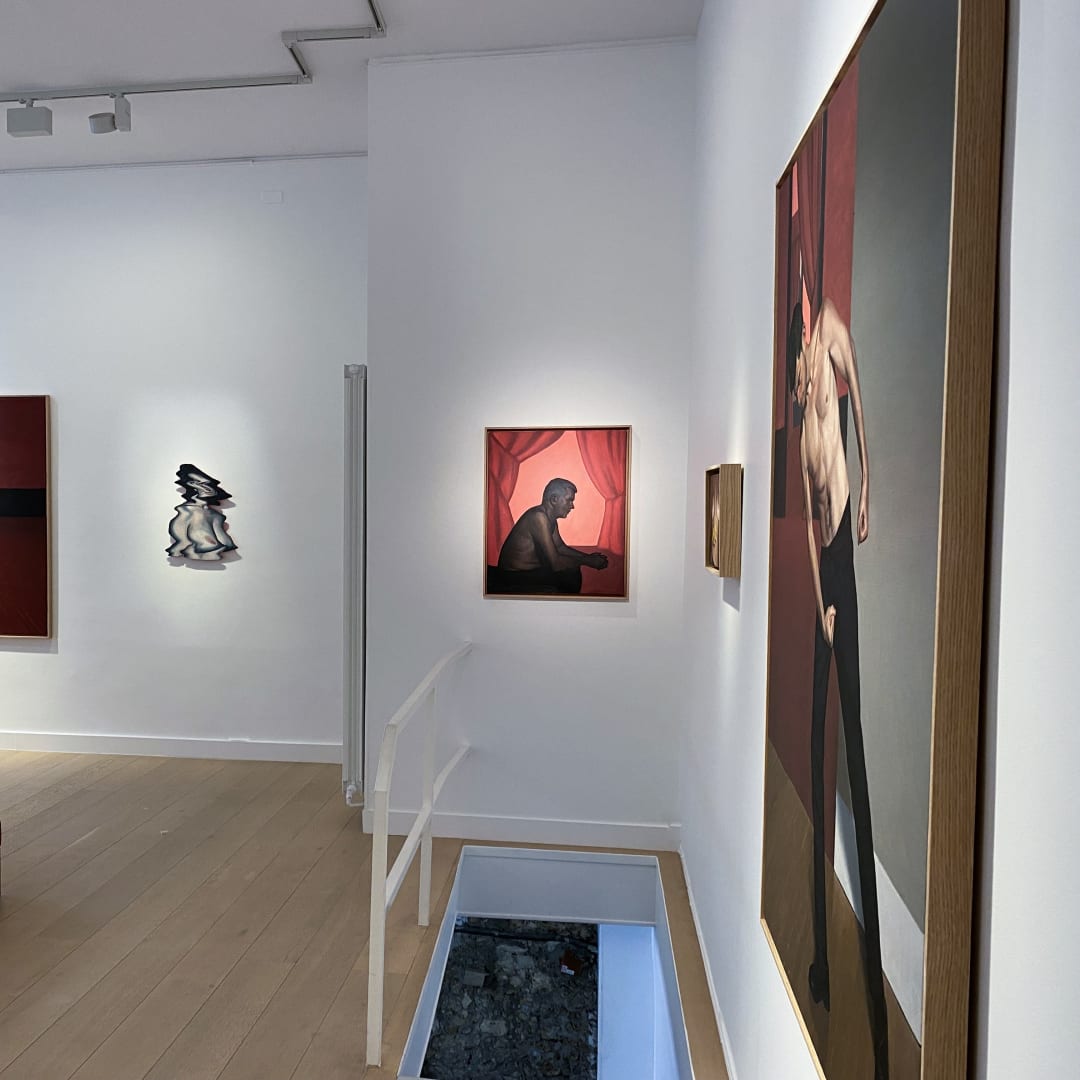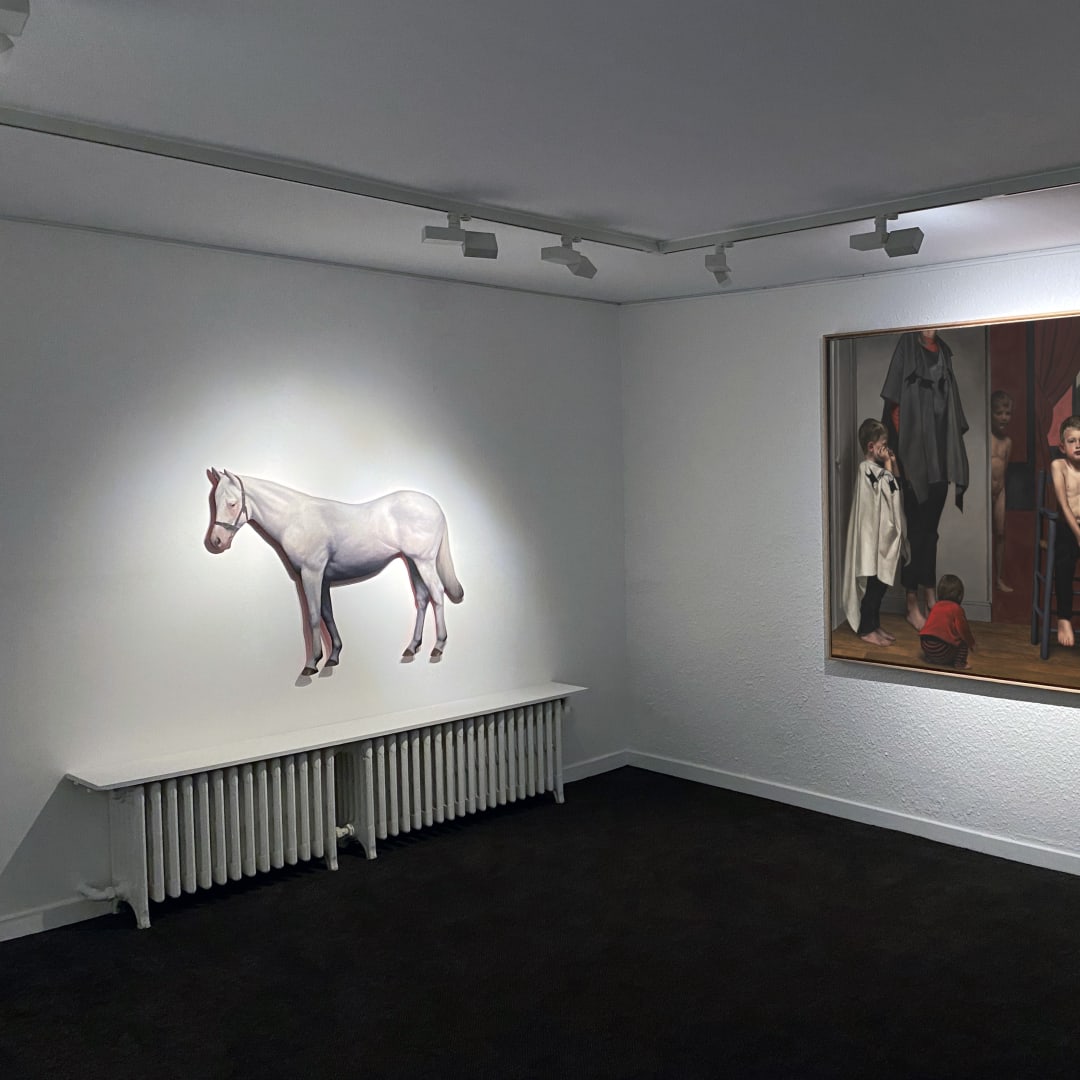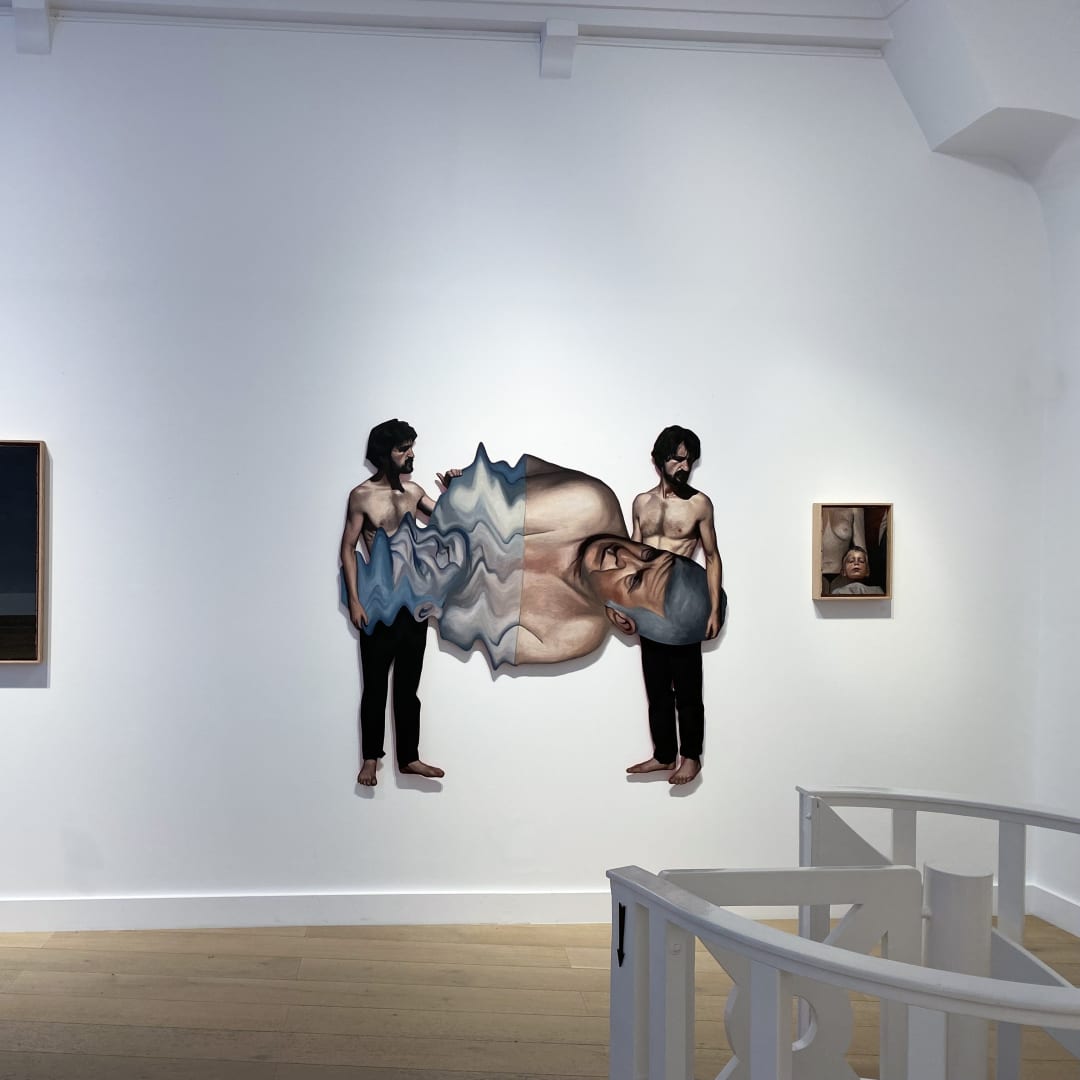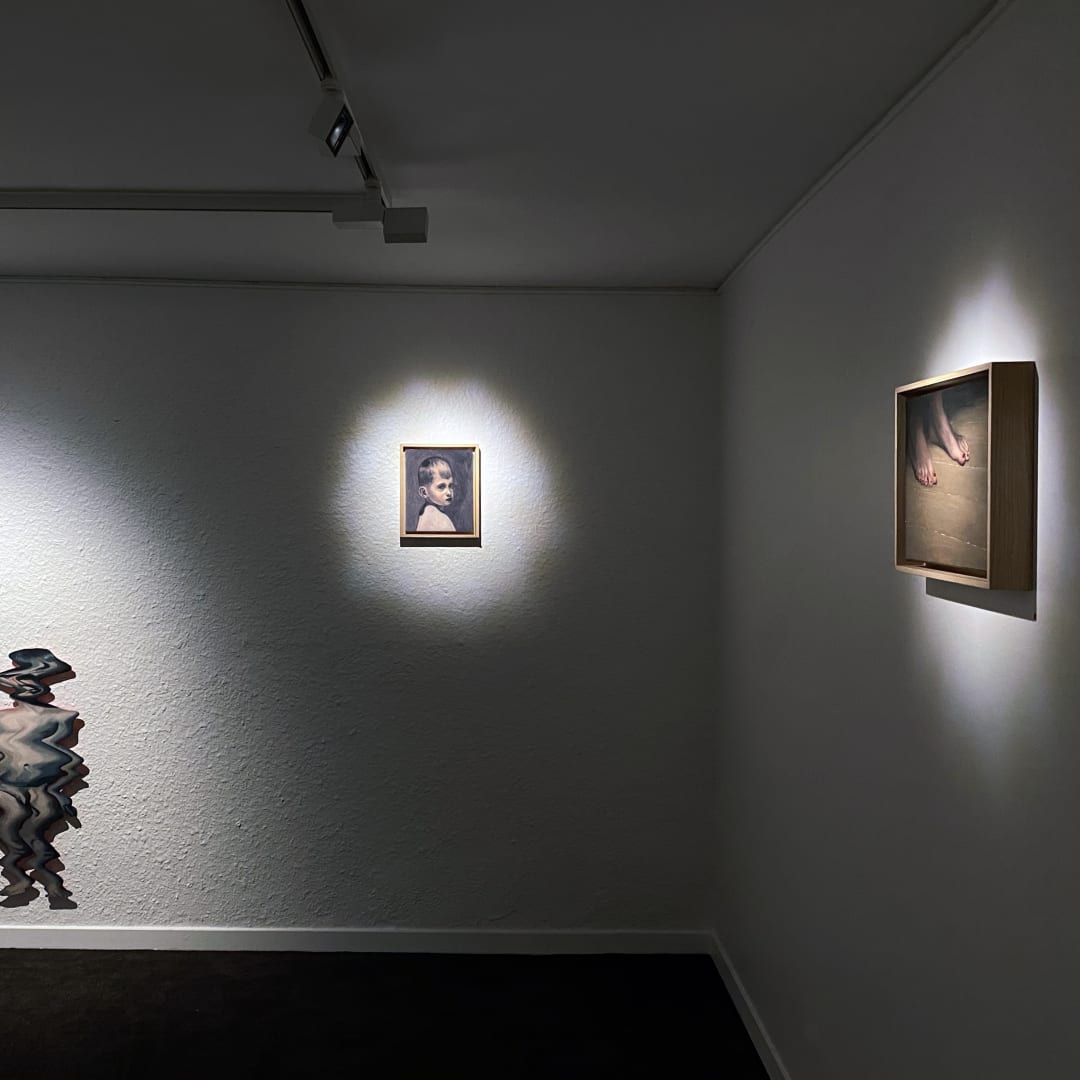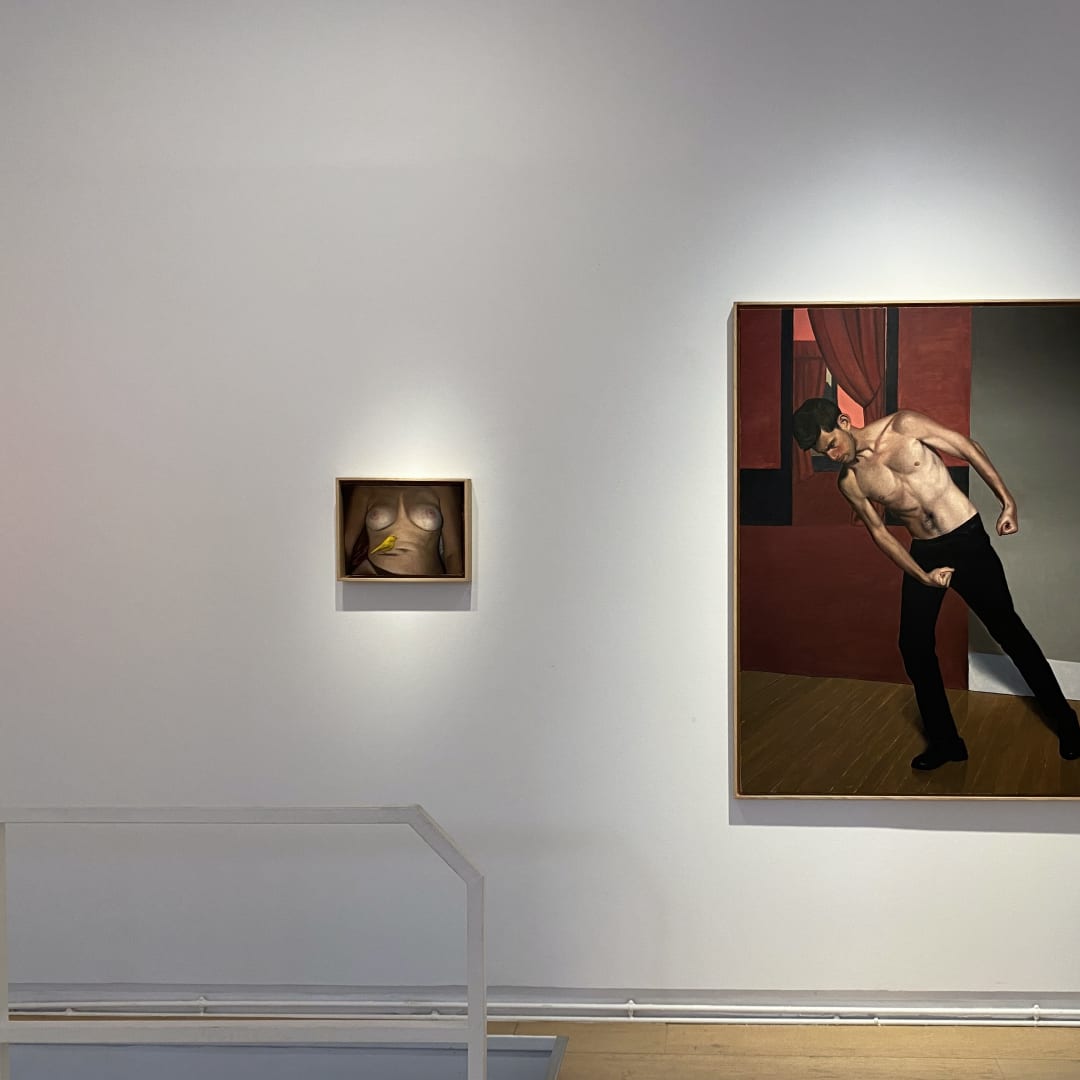ROCK, PAPER, SCISSORS
Rock, paper, scissors. This children's game could help guide us through the paintings by François Malingrëy assembled here. Hands with their movements and gestures, clasped or clenched or crossed, whether they lift or carry or groom, whether they frame or distort the face, whether they scratch an arm or hold sunflowers.
Rock, paper, scissors. Three words, three positions of the hand, three possibilities in a chain of sequences. Rock: the hand tightens to form a fist; paper: the hand is held flat; scissors: the index and middle fingers spread to form a V. The clenched fist of the man in one of the first paintings in the catalog, as we see the stubborn anger of the adult and child. The sheet of paper deployed against the wall in another painting, a large white page unfolded behind a boy sitting on a high chair and making faces. The scissors may be absent, but their work is visible in the multiple cutouts.
At the heart of the catalog, the female form from the Nude in the Red Bedroom (Nu dans la chambre rouge), painted by Félix Vallotton around 1897, is placed on the floor of a room, detached from its original painting, while a man (depicting the painter himself?) bends down to grasp her. A few images later, the same male figure holds the same Nude in his hands, but now both have become cutouts, as we are no longer confronting a canvas but rather a painted wood panel shaped to the contours of the figures portrayed.
In literally taking hold of Vallotton's painting, Malingrëy pays tribute to the work of an artist he holds in the highest esteem, but he does so in a peculiar manner. As a child can concentrate on cutting out cardboard figures of toy soldiers, here the painter removes, or borrows, the human figure from Vallotton's painting. And after taking possession of the nude figure, his bewildered expression seems to convey the question: What's next?
How does the artist address creators and works that have come before, that continue to be an inspiration but can sometimes become a burden? Through a series of paintings that also seem to function as a narrative sequence, Malingrëy seems to provide the most literally concrete response, namely, that the works that haunt us must be grasped, manipulated, reproduced, and almost manhandled, until they are sufficiently familiar to be deconstructed into individual pieces, and then incorporated, piece by piece, into one's own works. Almost child's play.
The Nude is eminently suitable to being cut out, as it seems so detached from the background in Vallotton's painting. But it is not the only element that François Malingrëy borrows. Note also the multiple draperies, the receding planes, the red room opening onto another room and then onto a garden. The painter creates cross sections in space, which may or may not line up, as one would arrange a mini theatre with paper cutouts. The doors sometimes open onto the garden and sometimes onto an infinite series of red bedrooms. The scissors compose a decor: the painter's approach here is less a matter of applying brushstrokes than of cutting, chiseling, arranging elements from the array of shapes spread across the table, cut out from a large white sheet.
From this eminently referential painting, and from his own compositions and models as well, François Malingrëy proposes a set of works that operate as montages - assemblies of shapes, planes, contours, canvas and painted wood. With a background in illustration and the performing arts, the artist uses the term "staging" to describe his modus operandi. There is something theatrical in the way the figures appear and disappear, as though entering and exiting the stage, or sometimes half-hidden in the shadow of a wall or behind a curtain, and ready to appear under the spotlights in the next tableau.
Half-nude, wearing simple or solemn black garments or draped in broad capes midway between ghost costumes and painter's coats, the figures seem to be surprised during a dress rehearsal, as they undergo final costume fittings, and fine-tune their movements, attitudes and positions on the stage. The spaces depicted, the gray, red and pink rooms, are stage sets for the acts in the play. (Is the painted wood another part of the set?) And much is happening offstage, as indicated by the artist's attention to the edges of the paintings, inviting us to be conscious of what will inevitably escape when attempting to "read" an image.
Once again, this is a form of play involving a dialogue between theatrical space and the dramatis personae, as the tale unfolds through narrative sequencing. The artist no longer makes rocks with his fists, but rather manipulates the strings above the theater of his own design.
Yet something seems to clash in this carefully constructed theatre of paint and wood cutouts; while the scenes initially appear to be inhabited by a varied cast of characters, and the space seems vast, on closer inspection many of the faces are the same, and spaces are little more than the repetition of a small set of rooms with no escape. And even if there is a garden, it always appears inaccessible. Could this be a dream space, where the architecture is a maze and the figures are all repeating images? And if this is really a theater, could we speak of a mental theater, a "theater of memory" not dissimilar to the renaissance-era mnemonic method developed by Giulio Camillo that drew on the ancient tradition of the Arts of Memory? Each individual is invited to imagine him or herself as the only spectator of a play performed in the theater created in one's own mind. The stage sets that one imagines and their various component parts will serve to help remember names, dates and ideas.
It is entirely conceivable that we are moving through the stage sets of the artist's mental theater, which is no longer populated by characters and actors, but rather by incarnations of the stages of life: birth (or rather: pregnancy), childhood, adulthood and old age. Many of the characters portrayed are different versions of the same individuals. To quote the Bible: "I am called Legion, for we are many" (Mark 5:9).
The mental theater holds our childhood memories and the multiple strata of our existence that all lie dormant within us. This multiplicity is brought out in several paintings by mirrors that both open onto and enclose the space around them. These mirrors are counterpointed by a series of painted wooden cutouts that offer their own distorted reflections, as if captured in a windswept pool or stream. Seeing oneself means looking within, into the confused or even terrifying image of one's own complexity.
Rock, paper, scissors. The clenched fists, and the pain from the pressure exerted until the knuckles turn white, are what finally deliver us from these mental spaces. The mirror surface in which we can see ourselves can then become a white sheet of paper, a canvas, or a wooden board. That's where the scissors come into play.
- NINA FERRER-GLEIZE
September 18, 2021

